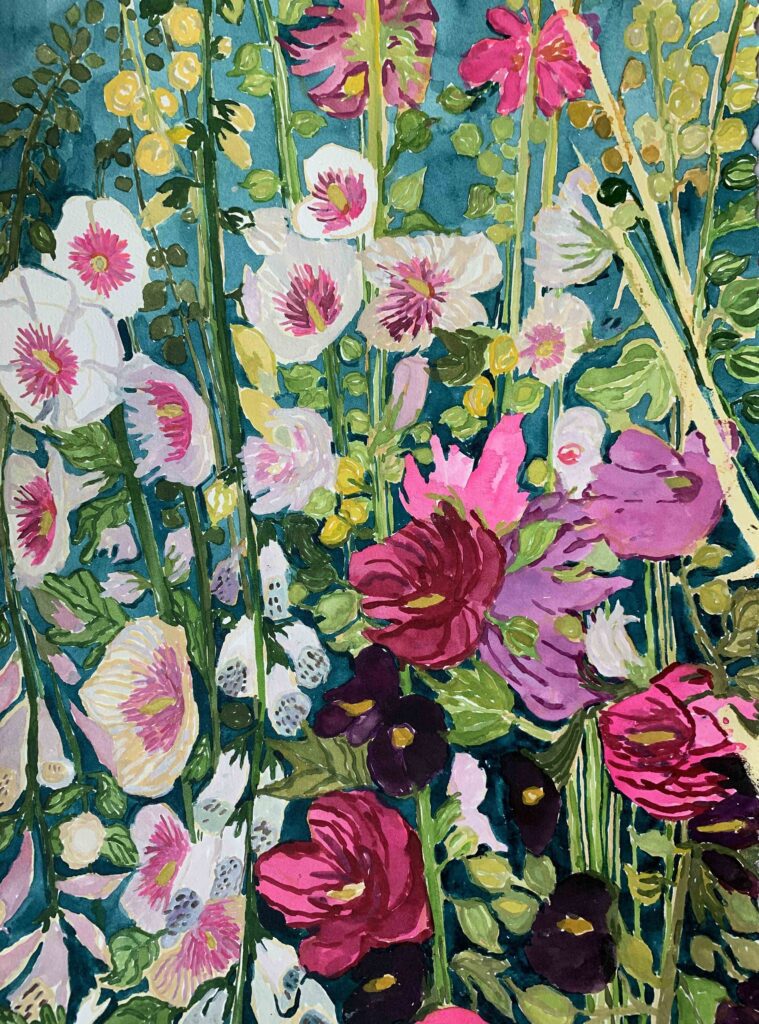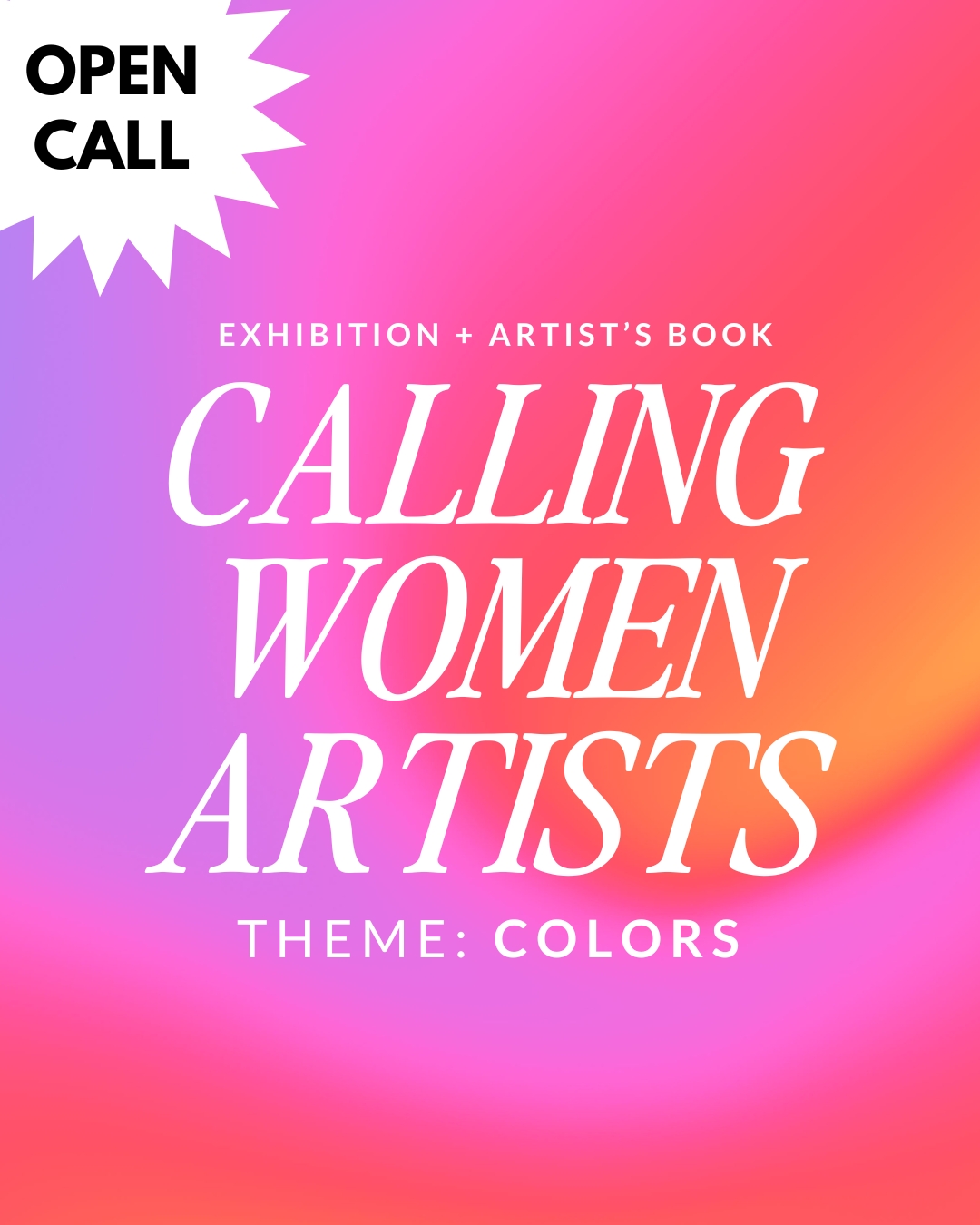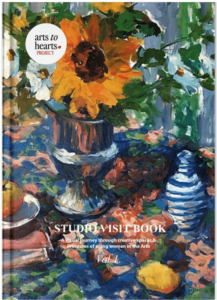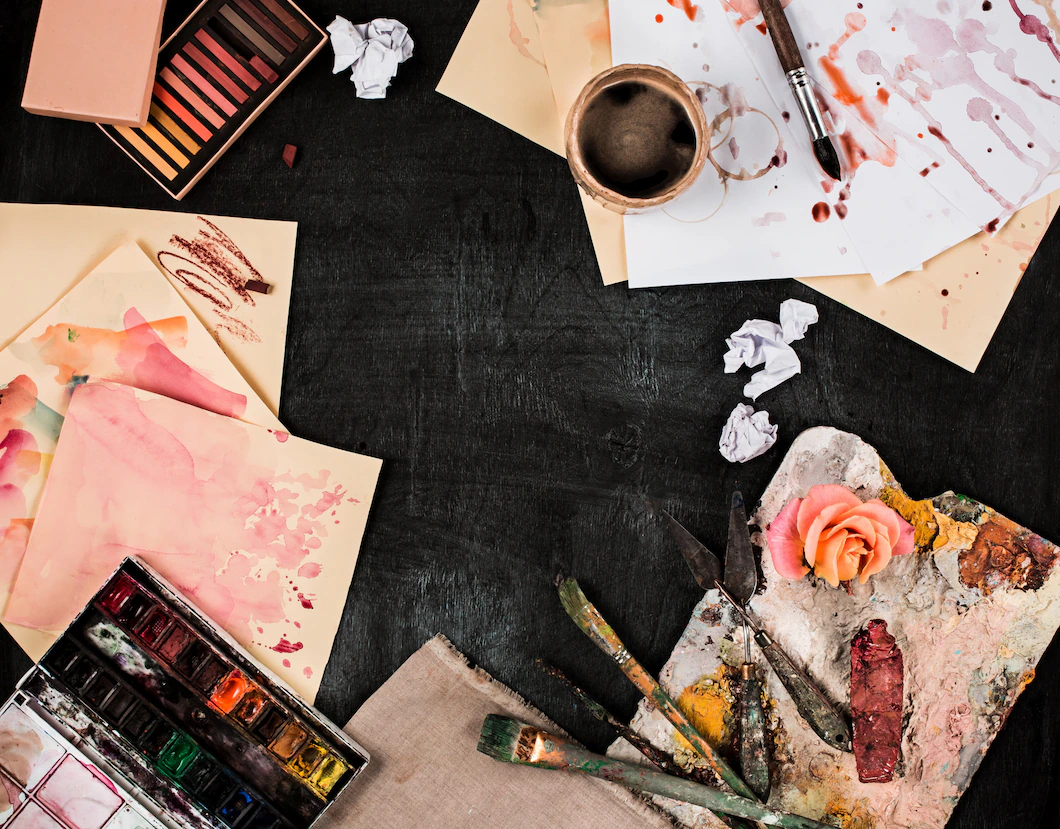
Experience Of Being In A Landscape With High-Chroma Palette: Interview With Nancy Andruk Olson


Nancy Andruk Olson focuses on our human relation to nature while using improvisational painting techniques coupled with a high chroma palette. The high chroma signifies an imagined landscape that describes both the practice of painting itself and the experience of being in a landscape. Andruk Olson’s work uses nature as a starting point to explore how paint can interpret our experience with the land and the experiences we have on the land.

Raised in Los Angeles, she attended Art Center College of Design as a high school student. Andruk Olson has a BFA in painting from BYU, where she spent most of her time working with Bruce Hixson Smith. Andruk Olson also has a Post-Baccalaureate certificate from The School of the Museum of Fine Arts, Boston. Her painting approach is direct, using a lot of impressionist techniques. The improvisation, the interaction of the paint, the interplay of the materials and the intensity of the colour are part of the language for her. Andruk Olson makes a lot of her own paint to ensure the intensity of the pigment is as high as possible.
Join us in the conversation with the artist Nancy Andruk Olson where she shares her inspiration for using a high-chroma palette in her work, what inspired her to start creating her own pigments, her artistic influences and sharing her childhood stories which framed her as the artist she is today.

1. Nancy, what inspired you to choose a high-chroma palette for your paintings?
The high chroma is a way to take things away from the natural world. Even though I paint landscapes and have reference to things that we see in the world, using an unnatural color palette takes it a step further away from representation. It allows me to work in a more dreamlike space.The high chroma signifies an imagined landscape that describes both the practice of painting itself and the experience of being in a landscape.


2. Nancy, what motivates you to create?
I don’t need motivation! For some reason it is just natural for me! It is just something that I do everyday like speaking or eating. It is a natural extension of myself. It is how I communicate.
3. So, what inspired you to make your own pigments for your artwork?
Traditional paints from the store were not getting the results that I wanted. I would mix and mix and never get the colors I imagined. I met another watercolor artist who had very vibrant colors and I asked her how she achieved those results. She said that she researched the pigment content of the paints before she purchased them. When I started doing this I realized that there was no real way to do that because there is no rating system between brands. Paint companies create rating systems within their own lines but they do not share them with each other. It is actually really hard to find out what is in the paint because paint companies are very secretive about it. I spoke to my art professor from college about this and he said,” You know Nancy, the only real way to control what is in your paint is to make it yourself.” This is so true. This started my own journey of making my own paint. Now I have developed it into my own company, Brighter Day Pigments, where I make watercolors with the highest pigment content possible. There are no filler or extenders and I preserve the natural quality of the pigments, so not all of the paint has an even texture like you find in the store. Some might be more gritty, some might be more smooth or creamy, it all depends on the pigments. I think that this makes painting more interesting, because it adds variety and texture.
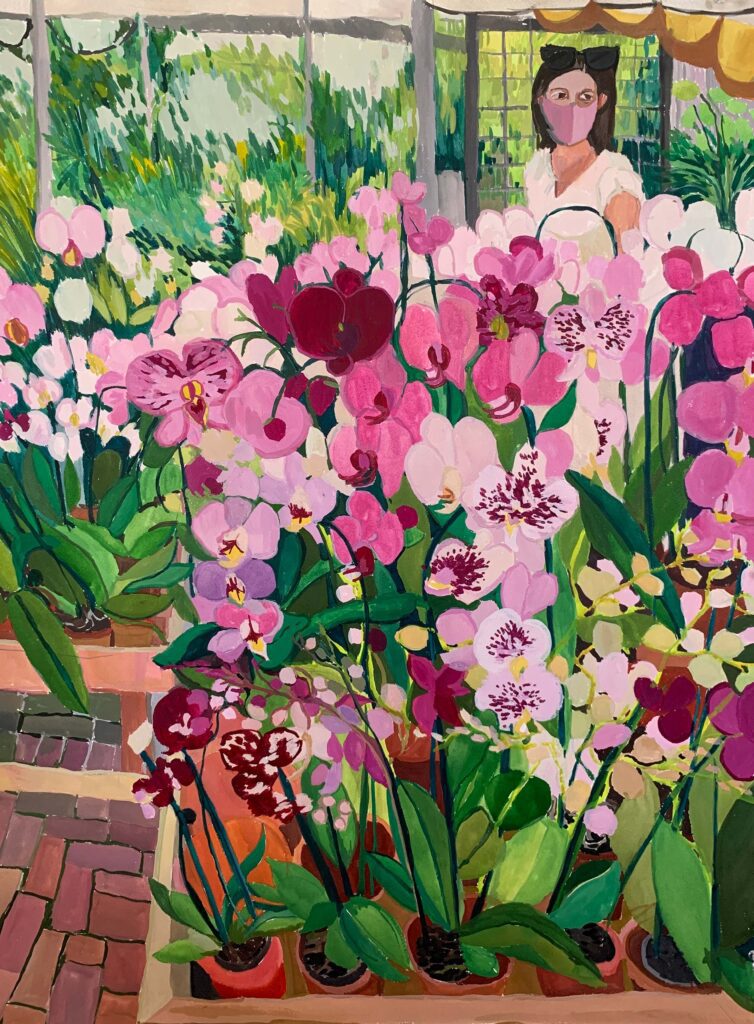
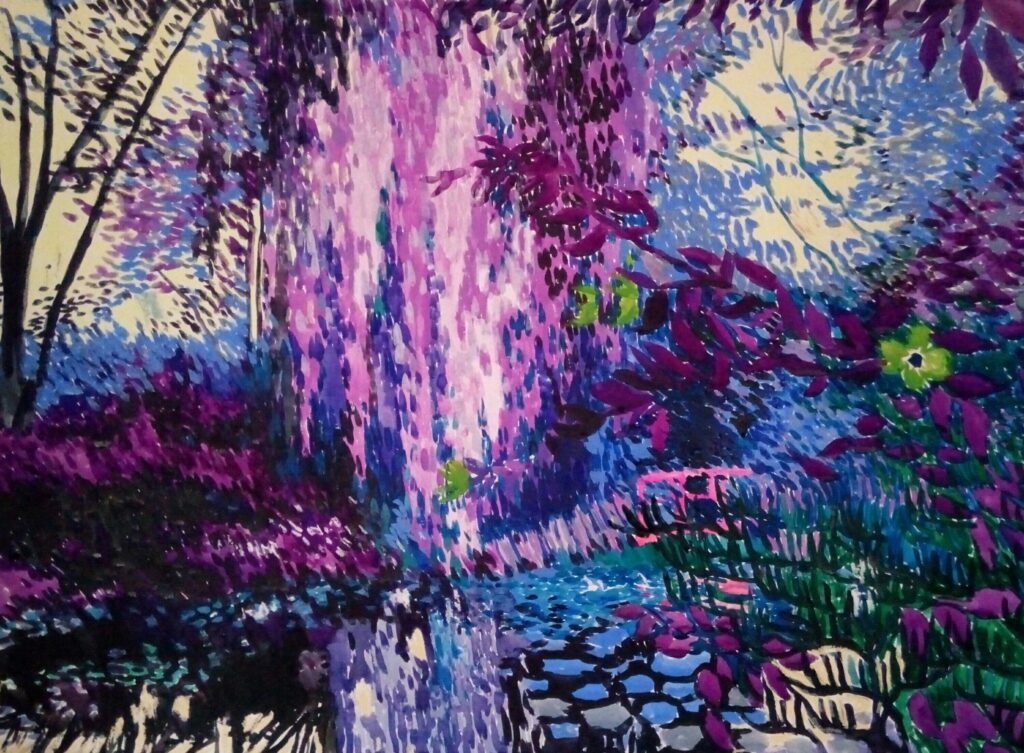
4. How did your childhood frame you as the artist you are today?
My mother is an artist and was the art teacher at my school growing up. The program at the school was excellent. I was able to try a lot of materials and do a lot of projects that many kids only do when they go to art school. This is by far the biggest childhood influence that I had on my artistic life today. We were constantly doing art projects at home. My mother would also take us to different places to paint outside. Another thing that we would regularly do was go to the Norton Simon Museum which was close to our home in Pasadena California. They have a very large and significant impressionistic collection. Looking at the original works from an early age really got those ideas into my mind and thought process. Having those experiences really wove creativity onto my daily life. It was a part of my lifestyle. Having the opportunity to experiment and spend time creating everyday allowed my artistic talents to grow and has made it easier as an adult to continue creating as a part of my life. Now that I have children I try to do that for them. I provide projects and materials for them so that they are able to make things everyday. Now that they are getting older and have their own ideas of things they want to create, I try to provide them with the opportunities to do that. It definitely is easier the earlier that you start. It creates patterns in your brain that just continue to develop throughout your life.
Nancy Andruk Olson views landscape paintings as a stage for human interaction.
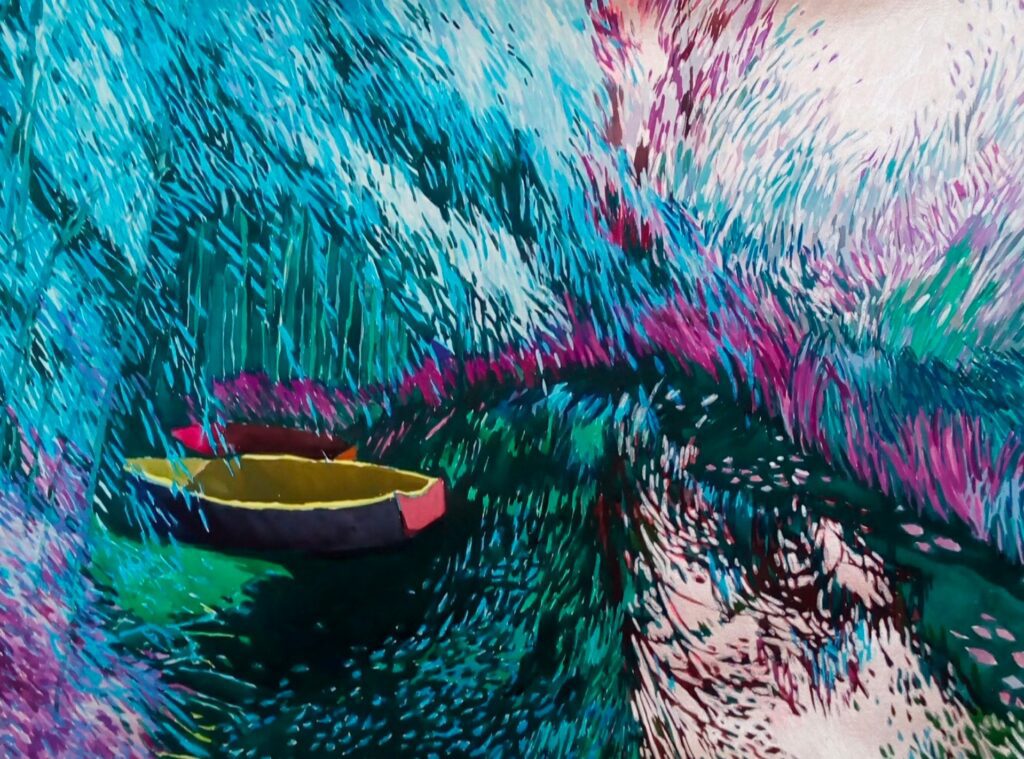
5. Nancy, what are your biggest artistic influences and what message do you wish to convey through your Art?
Impressionism seems like my earliest and most dominant influence. The idea of light and capturing a fleeting moment are something that I think about everyday. However there are some artists that I am very influenced by that maybe don’t really fit into that category. One of them is Pierre Bonnard. He worked entirely from memory and was using his daily life as inspiration. His work has an ethereal quality that I strive for in mine. I see many artists today working with these ideas and they are doing amazing work and they are inspiring to see as well. However my goal is to develop my own style into that ethereal quality. My work is primarily about my own life, and I think maybe that is strange for a landscape painter to say. But I view the landscape as a stage for human interaction. I focus on our human relation to nature while using improvisational painting techniques coupled with a high chroma palette. I use nature as a starting point to explore how paint can interpret our experience with the land and the experiences we have on the land. Natural objects are also used as a metaphor for human connection and a description of the feelings that arise as a result of human interactions.
